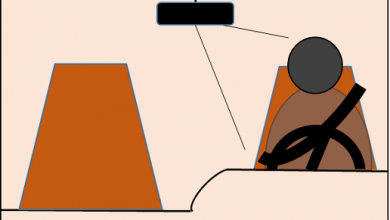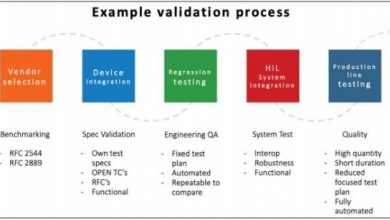From vehicles to everything – why C-V2X is enabling the connected future of transport

Cellular vehicle-to-everything (C-V2X) technology is set to revolutionize how IoT is utilized in transportation and other sectors because of the robust connectivity it provides that enables vehicles to understand and react to their environments in real-time. Although driverless cars remain many years away, C-V2X is a foundational technology for increased automation and providing richer information to drivers and from vehicles to infrastructure (V2I) and other vehicles (V2V)
Using either LTE or 5G, C-V2X can efficiently and securely connect pedestrians, vehicles, roads and other transportation devices. This creates a smart transportation system powered by the ability C-V2X enables to collect information from multiple sources and enable innovative new offerings, relying on the ubiquitous, secure, high-speed, low latency connectivity that LTE and 5G can offer.
C-V2X offers two modes of communication – direct and network. Direct communication between vehicles, infrastructure and other road users is enabled on the intelligent transport system (ITS) spectrum that has been identified and harmonized internationally for safety purposes. This works independently of cellular networks and forms the basis for standardized, global safety-related systems. Network communication, in which C-V2X uses the mobile network to receive information, enables C-V2X platforms to combine secure, wide area, short range connectivity in a single module and opens up appealing new use cases from assisted driving to richer infotainment experiences.
The ultimate destination might be enablement of fully automated self-driving vehicles but the low latency of 5G C-V2X, in particular, enables new business models today. We foresee use cases in conserving resources, reducing pollution, eliminating accidents and optimizing transport efficiency that rely on C-V2X connectivity. In addition, steps towards automated driving such as support for the various levels of advanced driver assistance systems (ADAS) will be enabled by connecting sensors, cameras and car data networks. Services such as pay-as-you-drive insurance, vehicle maintenance and diagnostics, infotainment and safety features such as eCall will all be supported by C-V2X.
This goes some way to explaining why adoption is already advancing. ABI Research predicts that by 2025 there will be more than 10 million vehicles capable of short range V2X communication with cellular connectivity available in 346 million vehicles and smart city cellular connections exceeding 165 million. This indicates a connected ecosystem of vehicles, infrastructure and people is coming together and crystalizing the value C-V2X can add.
Why C-V2X?
C-V2X offers a series of advantages to different types of users. For vehicle makers, the combination of secure wide area and short-range connectivity in a single module delivers a versatile and cost-efficient way to improve safety while also taking advantage of cellular technology’s strong security. Vehicle makers can take advantage of 4G and 5G economies of scale to select products from vendors to suit their needs and position themselves to monetize innovative new services around the connected vehicle.
For road operators, C-V2X allows for direct communications in the 5.9GHz intelligent transport systems (ITS) band to be supplemented by cellular communications ensuring high service availability and reliability. The arrival of 5G networks will allow for high volume data transfer and the low latency that many automotive applications demand. This improved performance has the potential to reduce the density of roadside infrastructure, thereby saving money.
For users and society in general, C-V2X uses familiar, established cellular technology to provide the coverage and low latency that safety-critical applications demand. The potential to enable assisted driving, avoid accidents and support communication between vehicles and infrastructure opens up the possibility of safer, faster journeys with increased automation making experiences better for drivers. As developments accelerate, assisted driving will reduce errors and the load on drivers, enabling them to participate in infotainment and other tasks.
The well-understood 4G and 5G cellular technologies that underpin C-V2X help because the existing ecosystem is already wide and this will ensure attractive applications are easy to develop, and that users trust the security and resilience of the network. C-V2X introduces an era in which vehicles will be seen to be protecting their users while also minimizing environmental impact and facilitating maximized efficiency. Put simply, C-V2X enables richer, faster, safer, optimized journeys at great cost efficiency in comparison to alternative technologies.
There are alternatives to C-V2X that rely on non-cellular networks but these don’t offer the globally standardized, familiar technologies framework of cellular technology. An obvious comparison is V2X with 802.11p-based alternatives but these are limited because they offer lower system performance in terms of spectral efficiency, weaker security and greater latency. At the other extreme, satellite communication can be too costly for the volume of continuous communications that V2X demands with coverage too patchy and latency too great for many use cases.
Modules for C-V2X use cases
As uptake of C-V2X accelerates across the globe, automotive original equipment manufacturers (OEMs) need to deploy modules in their vehicles that enable them to connect to and utilize C-V2X infrastructure and systems. Quectel has created a portfolio of modules that combine essential C-V2X capabilities and help streamline solution design.
Available in Europe, the Quectel AG55xQ is an automotive grade 5G NR sub-6GHz module which meets the 3GPP Release 15 specification and supports both standalone (SA) and non-standalone (NSA) modes. The AG55xQ supports maximum downlink rates of 2.4Gbps and uplink rates of 550Mbps for 5G NR, and maximum downlink rates of 1.6Gbps and uplink rates of 200Mbps for LTE-A. The AG55xQ supports C-V2X PC5 direct communications as well as Dual SIM Dual Activation (DSDA), provides numerous interfaces to enable application development, and offers strong performance in electro-static discharge (ESD) and electro-magnetic interference (EMI) protection, ensuring robustness in harsh environments. The AG55xQ is therefore an ideal solution for automotive applications, providing manufacturers and tier-1 suppliers with secure, reliable and flexible connected vehicle solutions, paving the way for safer roads, more efficient traffic, and autonomous cars. The module is deployed in telematics boxes, telematics control units, advanced driver-assistance systems, C-V2X (V2V, V2I, V2P) systems, on-board units and roadside units.
The Quectel AG52xR is a series of automotive grade LTE category 6/12 modules which supports maximum downlink rates of 600Mbps and uplink rates of 150Mbps under LTE category 12. The module supports C-V2X PC5 direct communications and a rich set of internet protocols, industry-standard interfaces and USB drivers for Windows 7/8/8.1/10, Linux and eCall. These allow the AG52xR to serve a wide range of IoT applications in industrial, consumer and automotive markets. The AG52xR is especially suitable for automotive applications such as fleet management, vehicle tracking, in-vehicle navigation systems, remote vehicle monitoring, remote vehicle control, remote vehicle diagnostics, security monitoring and alarms, vehicle wireless routing and in-car entertainment.
The Quectel AG15 is an automotive grade C-V2X module designed and manufactured according to IATF 16949:2016 standards. It is designed for use in extremely harsh environments and provides superior ESD/EMI protection performance. Through C-V2X PC5 direct communications, the AG15 makes traffic smoother and more efficient and paves the way for automated driving and achieving the goal of fully connected traffic. Based on 3GPP Release 14 compliant LTE-V2X direct communications, the AG15 supports vehicle-to-vehicle (V2V), vehicle-to-infrastructure (V2I) and vehicle-to-pedestrian (V2P) communications on the unified 5.9GHz ITS band without the need for a (U)SIM, cellular subscription or network assistance. It is able to meet connected vehicles’ demand of communication with lower latency, higher reliability and high throughput. The AG15 is a global V2X communication solution to meet enhanced driving safety, autonomous driving, ITS and ADAS application demands.
The Quectel AG57xQ is a series of automotive grade 5G NR Sub-6 GHz modules that support maximum 2.2 Gbps downlink and 550 Mbps uplink data rates at 5G NSA mode, and maximum 800 Mbps downlink and 200 Mbps uplink data rates at LTE-A. Supporting optional C-V2X PC5 direct communications, the AG57xQ series is a great solution for automotive applications and makes the traffic smoother and more efficient through paving the way for automated driving and achieving the goal of fully connected traffic. With the AG57xQ series, we are able to provide automotive OEMs and tier-1 suppliers with secure and reliable connected car solutions, and also provide vehicle manufacturers smart and flexible solutions to build self-driving cars. More specifically, the module will be commonly found in telematics boxes (T-Box), telematics control units (TCU), advanced driver-assistance systems (ADAS), C-V2X (V2V, V2I, V2P) systems, on-board units (OBU), roadside units (RSU), and other automotive/traffic systems.
In addition to this wide choice of modules that support C-V2X, Quectel, as a global IoT solution provider offers its extensive portfolio of embedded and external antennas, Connectivity-as-a-Service and its range of IoT device certification and testing services. Quectel Certification Services span regulatory, conformance and carrier compliance plus certifications of industry-specific devices and environmental and safety-related certifications. To further help customers, Quectel offers its pre-scan service in its own labs so certification compliance can be assessed before applying to certification authorities, thereby saving time on non-compliant certification applications. Quectel also offers technical support facilities and debugging solutions to address common, and not so common, certification issues. Quectel’s capabilities include project management, all paperwork tasks, dealing with labs and carriers, checking the test scope and making the minimum test scope, providing the necessary on-site support and providing testing and debugging. In addition, Quectel will fix issues as they arise and negotiate waivers where appropriate.
Global C-V2X roll-outs
Although the C-V2X specification is mature, deployments across the world are underway at varying paces as 5G and automotive infrastructure continues to be installed and different jurisdictions place different requirements on automotive OEMs. In Europe, for example, ABI Research reports there are suggestions in the industry that inclusion of V2X in the 2025 Euro NCAP vehicle safety rating scheme will be delayed to 2027 due to insufficient time to develop new test protocols. While the NCAP has not officially confirmed any changes, there is consensus that if the 2025 timeframe is maintained, it will focus on early, more simple use cases. There is also consensus that 2027 will be the inflection point for mass adoption because a complete range of richer, more complex use cases will become part of the Euro NCAP scoring.
In the US, the recent dismissal of the appeal against the FCC’s 5.9GHz spectrum proceedings means that C-V2X has a clear path and should spur the FCC to grant the existing C-V2X waiver requests faster. On the downside, the US may not have enough spectrum for some advanced cooperative perception use cases in the future. In China, C-V2X is currently found in low-volume premium vehicle models, but there are at least 25 OEMs in different stages of V2X production in the country. COVID-19 lockdowns and discussions about the GNSS positioning standard slowed down deployments in 2022, says ABI Research. However, shipments of vehicles with C-V2X will grow exponentially in 2023, surpassing the one million mark as carmakers prepare for China NCAP 2025.
These varying rates of adoption and development paint a picture of C-V2X as a clearly defined and well-established model for connecting vehicles. However, different markets are moving at different speeds which should be seen as the normal path to maturity taken by technologies. What is clear is that all markets see C-V2X as the enabling technology behind current connected vehicle use cases and as the foundational enabler of automated driving and very rich applications in the automotive sector in the near future. In just a few years the current variation in adoption rates across the world will level out and C-V2X will be deployed globally and at scale. Quectel’s portfolio of C-V2X modules, antennas and testing and certification services is ready to support this massive growth as the automotive industry accelerates into its connected future.
Author:

Dinesh Patkar, Regional Sales Director- India, Quectel Wireless Solutions
He has been leading sales in India for Quectel Wireless Solutions since 2011. He holds an engineering degree and has over three decades of industry experience, having worked in leadership positions with Advent, Arrow Electronics, Memes Unique and Avnet Max.



